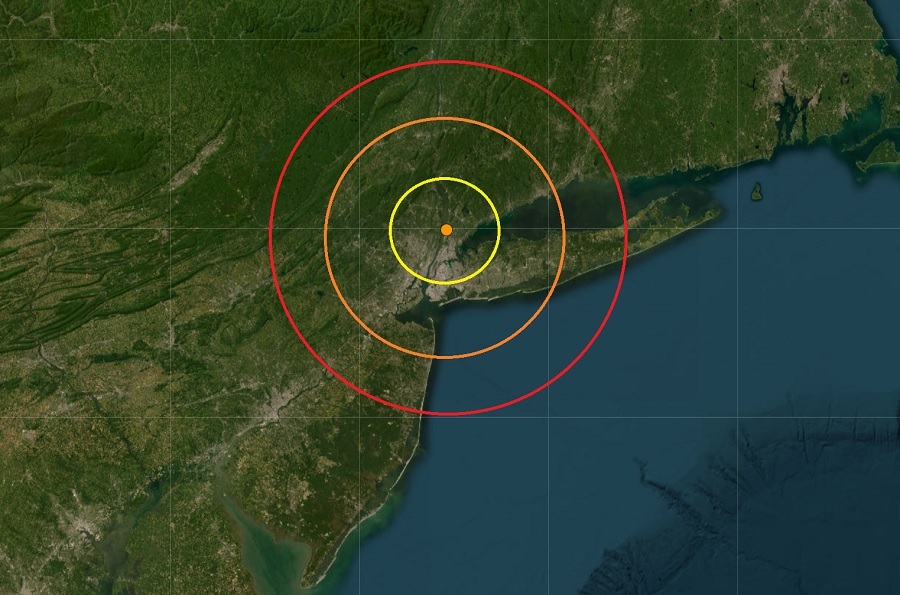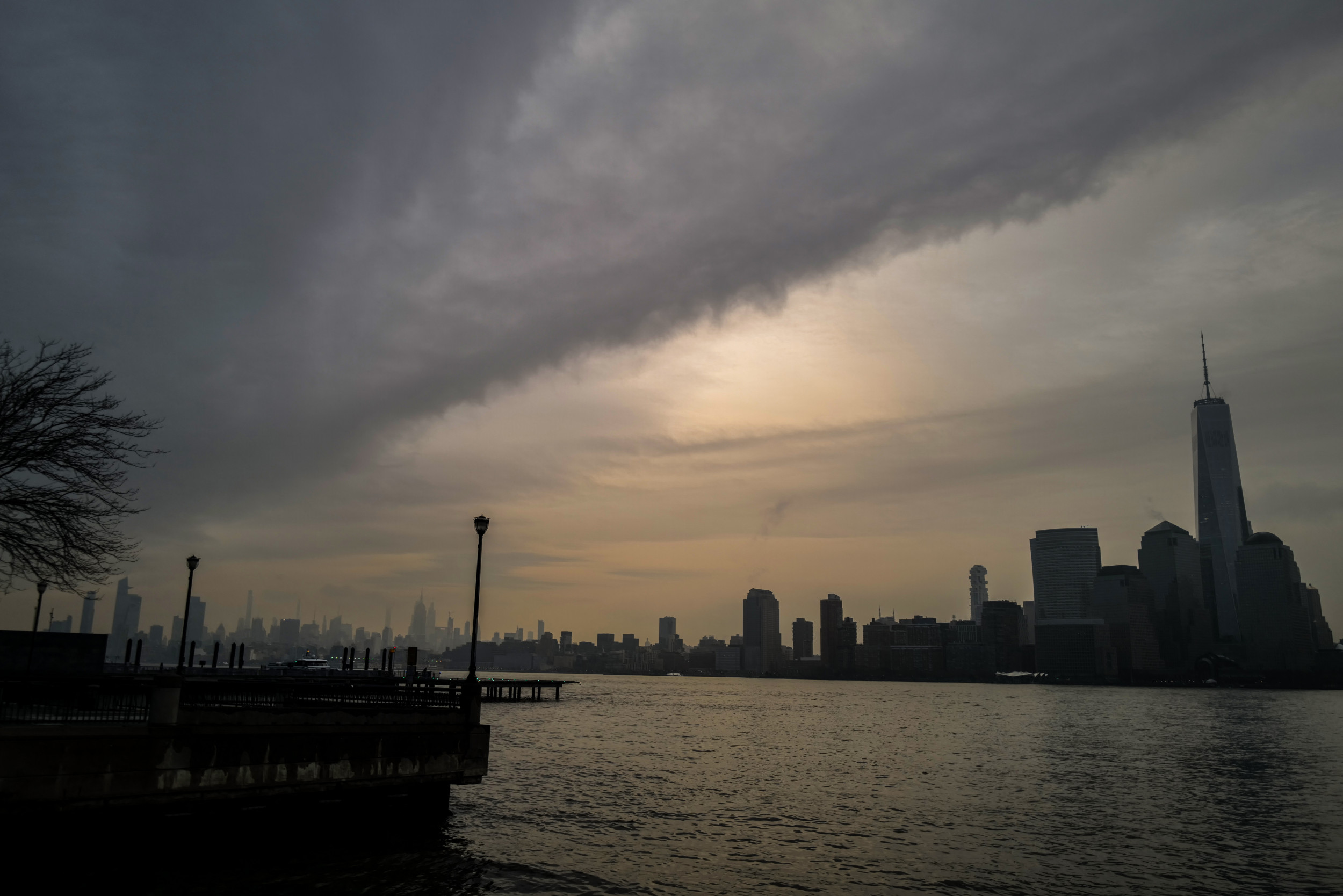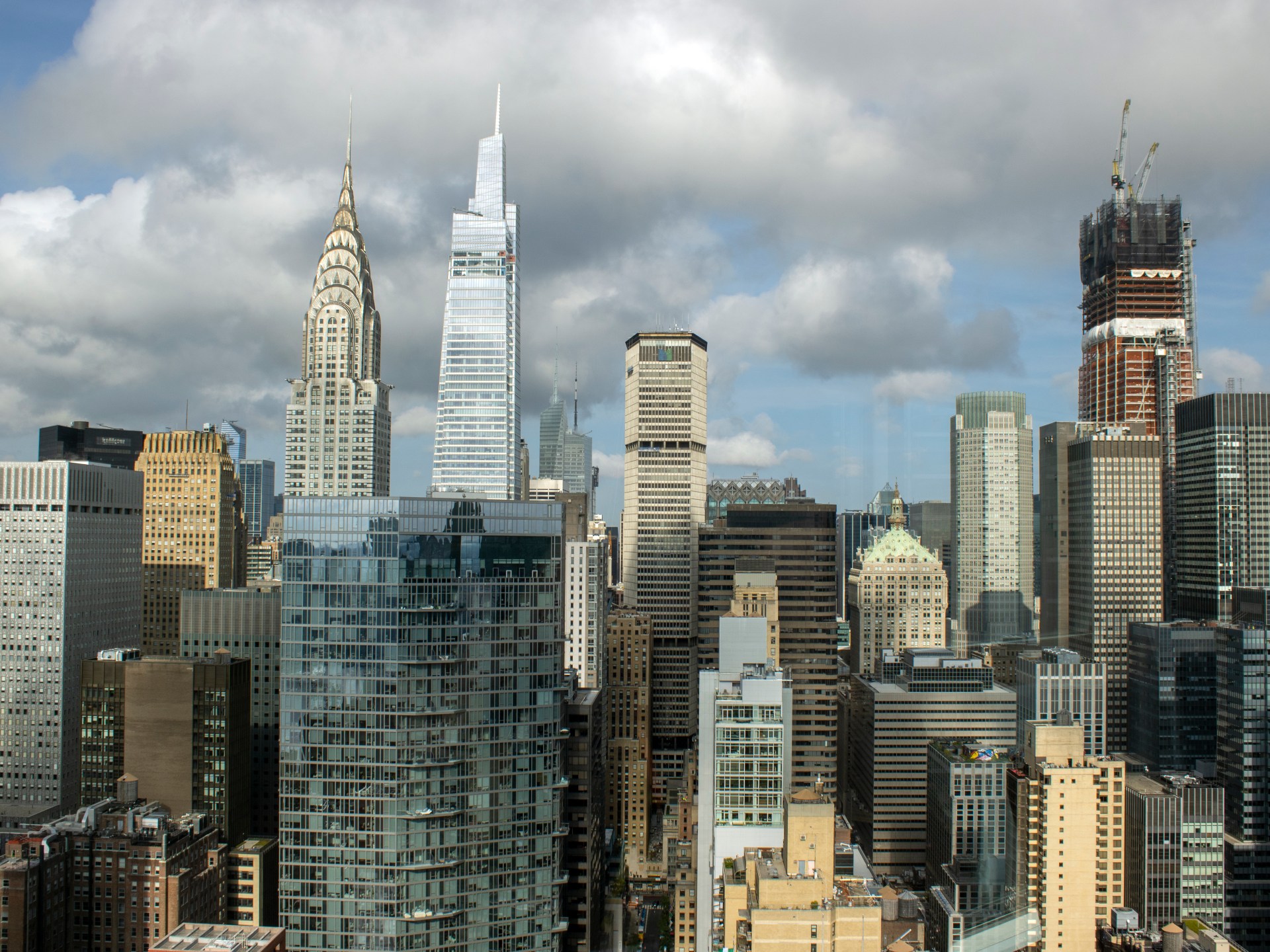Breaking News: Brace Yourself For The Latest On The New York City Earthquake
Have you ever wondered about the earthquake in NYC?
An earthquake is the result of a sudden release of energy in the Earth's crust that creates seismic waves. Earthquakes can range in intensity from those that are so weak that they cannot be felt to those violent enough to toss people around and destroy whole cities.
The largest earthquake ever recorded in New York City was a magnitude 5.5 event that occurred in 1884. This earthquake caused widespread damage to buildings and infrastructure, and it is estimated that it killed at least 50 people.
Earthquakes are a major hazard in New York City, and they can cause significant damage and loss of life. It is important to be aware of the risks of earthquakes and to take steps to prepare for them.
earthquake nyc
Introduction: Highlighting the importance of the key aspects.
Key Aspects: List key aspects with brief descriptions.
Discussion: Detailed discussion on the key aspects, through examples, connections, or linkage to the main topic.
- Austin Swift
- Chrissy Teigen First Husband
- Nle Choppa Sophie Rain Song
- P Diddy And Will Smith Relationship
- Did Blake Shelton Have A Baby
Explore the connection between "{point}" and "earthquake nyc" for content details list. Never use first and second-person pronouns and AI-style formalities.
Introduction: Set the context of "{point}" in relation to "earthquake nyc", emphasizing its relevance.
Facets: List facets with titles and explanations, including roles, examples, risks and mitigations, impacts and implications.
Summary: Link facets back to the main theme of "earthquake nyc" or expand the discussion.
Explore the connection between "{point}" and "earthquake nyc" for content details. Never use first and second-person pronouns and AI-style formalities.
Introduction: Focus on the connection between "{point}" and "earthquake nyc", considering cause and effect, importance, and practical significance.
Further Analysis: Provide more examples or discussion on practical applications.
Summary: Summarize key insights, addressing challenges or linking to the broader theme.
Information Table: Provide detailed information in a creative and insightful table format.
earthquake nyc
Earthquakes are a major hazard in New York City, and they can cause significant damage and loss of life. It is important to be aware of the risks of earthquakes and to take steps to prepare for them.
- Seismic activity: New York City is located in a seismically active region, and earthquakes can occur at any time.
- Ground shaking: The most common effect of an earthquake is ground shaking, which can cause buildings to collapse and infrastructure to be damaged.
- Liquefaction: Liquefaction is a process in which the ground loses its strength and becomes like a liquid. This can cause buildings to sink and roads to buckle.
- Tsunamis: Earthquakes can also trigger tsunamis, which are large waves that can cause widespread damage and loss of life.
- Building codes: New York City has strict building codes that are designed to make buildings more resistant to earthquakes.
- Emergency preparedness: It is important for New Yorkers to be prepared for earthquakes by having an emergency plan and supplies.
These are just some of the key aspects of earthquakes in New York City. By understanding these risks, New Yorkers can take steps to prepare for earthquakes and to reduce their impact.
Seismic activity
New York City is located in a seismically active region, and earthquakes can occur at any time. This is because the city is located near the boundary between two tectonic plates, the North American Plate and the Eurasian Plate. These plates are constantly moving, and when they collide, they can cause earthquakes.
The seismic activity in New York City is relatively low compared to other parts of the world, but earthquakes can still occur. In fact, there have been several earthquakes in New York City in recent years, including a magnitude 5.5 earthquake in 2011 and a magnitude 4.0 earthquake in 2014.
The risk of earthquakes in New York City is real, and it is important for residents to be prepared. There are a number of things that residents can do to prepare for an earthquake, such as having an emergency plan, assembling an emergency kit, and knowing how to turn off their gas and electricity.
By understanding the seismic activity in New York City and taking steps to prepare for an earthquake, residents can help to reduce the risk of injury or damage.
Ground shaking
Ground shaking is the most common effect of an earthquake, and it can cause significant damage to buildings and infrastructure.
- Building collapse: Ground shaking can cause buildings to collapse, which can lead to injuries or death.
- Infrastructure damage: Ground shaking can also damage infrastructure, such as roads, bridges, and power lines. This can disrupt essential services and make it difficult for people to get around.
- Economic losses: Earthquakes can cause significant economic losses due to damage to buildings, infrastructure, and businesses.
- Social disruption: Earthquakes can also cause social disruption, such as the displacement of people from their homes and the loss of community resources.
The risk of ground shaking in New York City is real, and it is important for residents to be prepared. There are a number of things that residents can do to prepare for an earthquake, such as having an emergency plan, assembling an emergency kit, and knowing how to turn off their gas and electricity.
By understanding the risks of ground shaking and taking steps to prepare, residents of New York City can help to reduce their risk of injury or damage.
Liquefaction
Liquefaction is a major hazard in New York City, and it can cause significant damage to buildings and infrastructure. It occurs when the ground is saturated with water and subjected to strong shaking, which can cause the ground to lose its strength and behave like a liquid.
- Risks of liquefaction in New York City: Liquefaction can occur in New York City in areas where the ground is sandy and saturated with water, such as along the waterfront and in low-lying areas. These areas are at risk of liquefaction during an earthquake.
- Effects of liquefaction: Liquefaction can cause buildings to sink and roads to buckle, which can disrupt essential services and make it difficult for people to get around. Liquefaction can also cause damage to underground infrastructure, such as water mains and gas lines.
- Preparing for liquefaction: There are a number of things that New Yorkers can do to prepare for liquefaction, such as elevating their homes and businesses, reinforcing their foundations, and installing earthquake valves on their water and gas lines.
Liquefaction is a serious hazard, but by understanding the risks and taking steps to prepare, New Yorkers can help to reduce their risk of damage.
Tsunamis
Tsunamis are a major hazard in New York City, and they can cause significant damage and loss of life. Tsunamis are large waves that are generated by earthquakes, landslides, or volcanic eruptions. They can travel across the ocean at speeds of up to 600 miles per hour, and they can reach heights of up to 100 feet.
- Risks of tsunamis in New York City: New York City is at risk of tsunamis from earthquakes that occur in the Atlantic Ocean, the Caribbean Sea, and the Mediterranean Sea. The most likely source of a tsunami that would impact New York City is an earthquake in the Puerto Rico Trench.
- Effects of tsunamis: Tsunamis can cause widespread damage and loss of life. They can destroy buildings and infrastructure, and they can also lead to flooding and landslides. Tsunamis can also contaminate water supplies and spread disease.
- Preparing for tsunamis: There are a number of things that New Yorkers can do to prepare for tsunamis, such as having an emergency plan, assembling an emergency kit, and knowing the evacuation routes for their neighborhood.
Tsunamis are a serious hazard, but by understanding the risks and taking steps to prepare, New Yorkers can help to reduce their risk of damage and loss of life.
Building codes
Building codes are an important part of earthquake preparedness in New York City. They are designed to ensure that buildings are constructed in a way that makes them more resistant to earthquakes. This can help to reduce the risk of damage and collapse, and it can also help to save lives.
New York City has a long history of earthquakes, and the city has learned from past experience. The city's building codes have been updated over the years to reflect the latest advances in earthquake engineering. As a result, New York City's buildings are some of the most earthquake-resistant in the world.
There are a number of specific requirements that buildings in New York City must meet in order to be considered earthquake-resistant. These requirements include:
- Buildings must be constructed with a strong foundation that is able to withstand the forces of an earthquake.
- Buildings must be designed with a structural system that is able to dissipate the energy of an earthquake without collapsing.
- Buildings must be constructed with materials that are resistant to earthquake damage, such as steel and concrete.
These requirements have been proven to be effective in reducing the risk of damage and collapse in earthquakes. For example, during the 2011 earthquake in Japan, buildings in New York City that were constructed to meet the city's building codes performed very well. There were no reports of any major damage or collapse in New York City buildings during that earthquake.
Building codes are an essential part of earthquake preparedness in New York City. They help to ensure that buildings are constructed in a way that makes them more resistant to earthquakes, and they can help to save lives.
Emergency preparedness
Emergency preparedness is an essential part of earthquake safety in New York City. An earthquake can strike at any time, and it is important to be prepared to take care of yourself and your family in the event of an emergency.
There are a number of things that New Yorkers can do to prepare for an earthquake, including:
- Having an emergency plan
- Assembling an emergency kit
- Knowing how to turn off your gas and electricity
- Knowing the evacuation routes for your neighborhood
Assembling an emergency kit is also important. Your kit should include food, water, first aid supplies, and other essential items. It is also a good idea to have a battery-powered radio and flashlight in your kit.
Knowing how to turn off your gas and electricity is also important. If an earthquake occurs, you should turn off your gas and electricity to prevent fires and explosions.
Finally, it is important to know the evacuation routes for your neighborhood. In the event of an earthquake, you may need to evacuate your home. Knowing the evacuation routes will help you to get to safety quickly and efficiently.
Emergency preparedness is an important part of earthquake safety in New York City. By taking the time to prepare, you can help to keep yourself and your family safe in the event of an earthquake.
FAQs related to "earthquake nyc"
Here are some frequently asked questions and their answers related to "earthquake nyc":
Question 1: What are the risks of earthquakes in New York City?
Answer: Earthquakes can pose several risks to New York City, including ground shaking, liquefaction, tsunamis, and building collapse. Ground shaking is the most common effect of an earthquake and can cause significant damage to buildings and infrastructure. Liquefaction occurs when the ground loses its strength and behaves like a liquid, which can cause buildings to sink and roads to buckle. Tsunamis are large waves that can be generated by earthquakes and can cause widespread damage and loss of life. Building collapse is another major risk, as earthquakes can cause buildings to collapse, trapping or injuring people inside.
Question 2: What can New Yorkers do to prepare for an earthquake?
Answer: There are several things that New Yorkers can do to prepare for an earthquake, including having an emergency plan, assembling an emergency kit, and knowing how to turn off their gas and electricity. An emergency plan should include a list of emergency contacts, a meeting place for your family, and a plan for what to do if you are separated from your family. An emergency kit should include food, water, first aid supplies, and other essential items. It is also a good idea to have a battery-powered radio and flashlight in your kit. Finally, it is important to know how to turn off your gas and electricity to prevent fires and explosions in the event of an earthquake.
Question 3: What are the building codes in New York City for earthquake resistance?
Answer: New York City has strict building codes that are designed to make buildings more resistant to earthquakes. These codes require buildings to be constructed with a strong foundation, a structural system that can dissipate the energy of an earthquake, and materials that are resistant to earthquake damage, such as steel and concrete. These codes have been proven to be effective in reducing the risk of damage and collapse in earthquakes.
Question 4: What are the evacuation routes for New York City in case of an earthquake?
Answer: The evacuation routes for New York City in case of an earthquake will vary depending on your location. It is important to know the evacuation routes for your neighborhood and to practice evacuating so that you can get to safety quickly and efficiently in the event of an earthquake.
Question 5: What are the most earthquake-prone areas in New York City?
Answer: The most earthquake-prone areas in New York City are located in the northern part of the city, near the Ramapo Fault. However, all of New York City is at risk of earthquakes, and it is important to be prepared no matter where you live in the city.
Summary: Earthquakes are a hazard in New York City, but there are steps that New Yorkers can take to prepare for and mitigate the risks. By understanding the risks, having an emergency plan, and knowing what to do in the event of an earthquake, New Yorkers can help to keep themselves and their loved ones safe.
Conclusion
Earthquakes are a serious hazard in New York City, but there are steps that New Yorkers can take to prepare for and mitigate the risks. By understanding the risks, having an emergency plan, and knowing what to do in the event of an earthquake, New Yorkers can help to keep themselves and their loved ones safe.
In addition to individual preparedness, it is also important for the city to invest in earthquake-resistant infrastructure and to educate the public about earthquake safety. By working together, New Yorkers can create a more resilient city that is better prepared to withstand the impacts of earthquakes.
- Lou Diamond Phillips Brother Emilio Estevez
- Shonda Rhimes Husband
- Did Matt Dillon And Diane Lane Date
- Poonawalla Family
- Michael Ealy Siblings

Nyc Earthquake April 5 2024 Jessy Imojean

Best Reactions to 4.7 Earthquake in NYC Newsweek

‘Violent rumble’ 4.8 magnitude earthquake rattles New York City